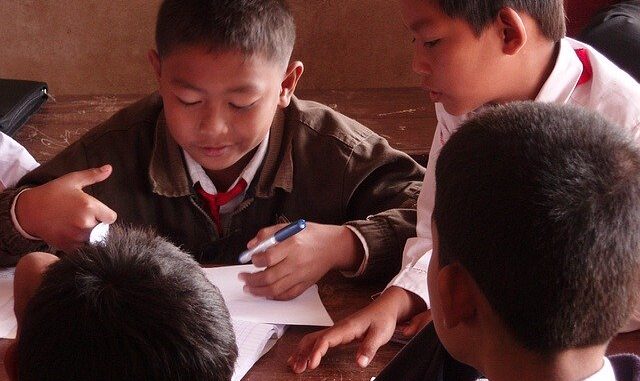
One strategy for helping students to develop as self-directed learners is to give them experience learning from one another, that is, collaborating on tasks to facilitate their learning apart from direct interaction with a teacher. A recent article in the Journal of Educational Psychology examined the effects of peer interaction in facilitating learning through a meta-analysis of 71 studies involving 7,103 students from 4 to 18 years old.
The results indicated the allowing students to work in groups, typically of 2 to 4 students but sometimes larger, resulted in greater learning than having students work alone. When students were asked to reach consensus the effects were even greater.
Although the results of the meta-analysis suggest that encouraging student interaction on learning tasks can be a fruitful approach, two derivative reports indicate that some commentators find this difficult to accept.
Jill Barshay labels student collaboration as one of the hallmarks of “so-called ‘Progressive Schools'” and focuses on the need to create certain conditions to realize the positive effects of such interaction, highlighting the fact that interacting with peers was less effective than interacting one-on-one with the teacher. She goes on to note a number of her own additional questions about peer learning.
Even more skeptical of the results of the meta-analysis is Natalie Wexler writing in Forbes who opens by noting the while teachers have been taught (by schools of education) that it’s a good idea to have students work in groups, too often there is little or no benefit. She proceeds to stress a number of problems that could beset group work.
The results of the research report raise a number of interesting avenues for further investigation, but the main takeaway is that understanding more about the benefits of students working together is likely to be a productive line of inquiry.


Be the first to comment